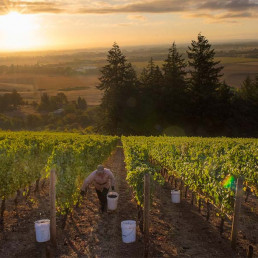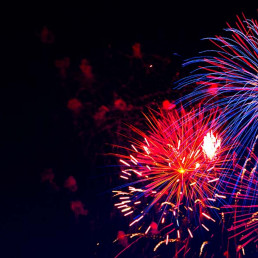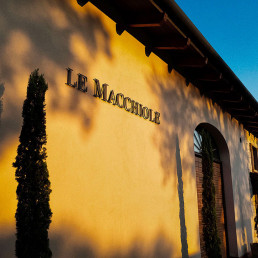Bordeaux Beauties from the 2018 Vintage
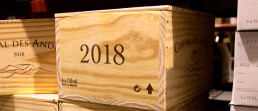
If you desire mystique, tradition, and exclusivity from your wines, here it is – the 2018 vintage extraordinaire of Bordeaux.
Some of the world’s greatest wines hail from the hallowed region of Bordeaux. These incredibly evocative names like Lafite, Latour, Margaux, Mouton-Rothschild, Petrus, Le Pin – and their long histories – give Bordeaux a lustre that few other wine regions can match. From the beginner wine enthusiast to the most knowledgeable connoisseur, great Bordeaux wines are known, sought after, and deservedly loved throughout the world.
Which is why Dhall & Nash is over the moon to Focus On our range of the extraordinary 2018 Bordeaux – these wines are singing! They are magical bottles that deserve thought, time, and your attention.
And what better way to check in on your 2018 vinous gems’ development than with CORAVIN Wine Preservation System. Eureka! Dhall & Nash is now the exclusive NZ stockist of this game changer system. This is the wine gadget on every Wine Lovers must-have list! Check out our range here.
Onto the excellent 2018 vintage which brings a broad range of divine wines at every level – from top classed growth chateaux (100 pointers!) in prestigious appellations of Pauillac, Pomérol, St. Émilion, Margaux, and St Julien – down to the smallest petit chateaux in lesser-known areas like Cotes de Castillon, Cotes de Francs, or Premieres Cotes de Bordeaux. This is great news for Bordeaux lovers at every budget level.
“The wines are like flying carpets in 2018,” says Baptiste Guinaudeau, winemaker at Pomérol’s celebrated Château Lafleur, who says the wines are powerful and structured yet remain agile. “Unlike the 2016s which are also excellent, but we were not sure about the quality at first, we knew that we had a great vintage by August with 2018.”
“The majority of the 2018 reds in my tastings were beautifully structured with ripe fruit and potent tannins, yet there is an impressive drinkability to them, which is a great sign of quality.”
James Suckling, Wine Critic
What Makes a Great Vintage?
Actually, we should ask firstly, what makes a wine genuinely great? As most wine aficionados know, there’s no straightforward answer to that – the greatness of a wine hinges on a delicate balance of many factors: the producer, the terroir, the grape, the growing conditions, the harvest…
One of the most effective markers of a great wine is, without doubt, its vintage year – the year in which a wine’s grapes were harvested. Then ultimately what constitutes a great vintage year depends heavily on the capricious weather.
Vintage variation is particularly important in Bordeaux. Cellar-worthy vintages can surge in value over generations, or nowadays, often in even less time. In short, for Bordeaux, it helps to know your vintage. Good vintages seem to come every five years, or sometimes two years one after another. Some recent great years include: 1990, 1995, 2000, 2005, 2006, 2009, 2010, 2015, 2016, and now 2018.
“.. the [2018] vintage had begun with a bizarrely challenging first half of the growing season. It has ended up, not for the first time, as a year of mixed fortunes.”
JancisRobinson.com
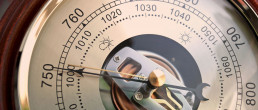
The Bordeaux Weather Report 2018
One thing is agreed, 2018 is not clearly a Left Bank or a Right Bank type of vintage. It seems that there is great quality fruit across both the Right and Left Bank. Where 2015 was pretty clearly a Merlot vintage, and 2016 pretty clearly a Cabernet Sauvignon one, 2018 is less clear cut. Due to challenging weather patterns, 2018 was a complicated vintage for sure. So how did Mother Nature shape things in the vineyard?
Cranking out the old sporting cliché, 2018 was most definitely a game of two halves. The first six months of the year saw as much rain as growers expect in an average year. Christian Seeley of Château Pichon Baron in Pauillac commented that this was the most difficult period for producers. The weather conditions were suited to the development of mildew on a dangerous scale. Skillful human intervention was paramount. Proactive management techniques in the vineyard, in particular ahead of these conditions, were vintage saving. For the less attentive and those caught napping the consequences were potentially disastrous.
‘The story of 2018 was the mildew, the speed and the quantity of it,’ said Martin Lasserre, of Union Régionale Agricole Bordelaise. The impact on organic and biodynamic estates has been well documented, with Pontet Canet and Palmer at yields of around 12h/h. Which translated to 75% loss of crop for these top chateaux.
The organic Château Rocheyron in St Émilion, also biodynamic, came in at 28hl/hl. ‘We had 56 attacks of mildew this year compared to 30 in 2007 or 10 in a normal vintage,’ said Peter Sisseck, owner of Rocheyron. ‘We worked hard to stimulate the natural defences of the plant, and ended up with reasonable yields, but there is a lot still to learn about how to control the vines’ response to the threat’.
For those affected, there was comfort in the fact that downy mildew affects quantity but not quality. Frederic Engerer at Château Latour pointed out that, ‘Mildew dries the berries and so is visible to the eye. This means it can be dealt with through sorting in the vineyard and cellar’.
This means that machine harvesting is not a problem with mildew in the way that it is with rot, because the dried berries are easier to discard. If the affected grapes are not taken out, the flavours that are transmitted into the wine are not those associated with rot, but rather more like dried out fruits, prune-like flavours, or dried leaves.
“After an uneven vintage in 2017, Bordeaux was buzzing with anticipation over the 2018s”
Antonio Galloni, VINOUS
But wait, then there was hail! For some, the crucial months of May and June had their own challenges. On May 26th there was an extremely harsh hailstorm in the city centre of Bordeaux and its surrounds. This impacted the southerly vineyards of Pessac-Léognan, hitting some of the earlier flowering sites. Château Haut-Brion reported some loss of potential fruit, but nothing catastrophic. Strangely nearby Château Haut Bailly escaped unscathed. At the neighbouring property, Château Le Pape, they lost 50% of their crop, which shows how localised these storms can be. A slight dip in temperature in early June caused some coulure (aborted fruit set) reducing potential yields in some vineyards. Arguably this was no bad thing, as at this stage some producers were fearing an excess of production from their vines.
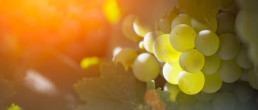
The Second Half Game
A dramatic change in weather conditions at the start of July saw the second half of the “match” get underway with a bang. In Pomérol esteemed producer, Edouard Moueix (of Chateaux Lafleur Petrus, Trotanoy, Belair Monange) described four months of amazing luminosity, the longest period of consistent daytime sunshine since the fabulous 1990 vintage. This was crucial for the development of the excellent fruit quality that characterises the 2018 vintage.
In addition, while the total temperature for the same period was warmer than 2003, it kept below the excessive peaks of 40 degrees or more, which impacted on that vintage. Furthermore, most evenings the temperature dipped significantly. The cool and fresh nights helped maintain much required acidity levels, so vital for wines of true quality and balance.
There was just one curve ball in this summer of sunshine. Sadly, on July 15th, the very day that France won the Football World Cup, the heavens opened. Hailstones the size of golf balls fell on some of the greatest estates in Sauternes. In the satellite vineyards of Bourg and Blaye and at Château La Lagune in the Haut-Médoc the crop was completely wiped out.
Outside of this localised calamity, the only real concern in the three summer months up to the harvest was, ironically, a lack of rainfall. It was now that vineyard location and terroir really came into play. Vines planted on sandier free-draining soils were at risk of suffering from water deprivation. However, the best located estates in the Médoc and the superbly positioned clay-based vineyards of Pomérol and St Émilion escaped hydric stress; they not only coped but they truly excelled.
‘We could pick just about any time we wanted,’ said Alexandre Thienpont, winemaker at Vieux Château Certan as well as Le Pin. ‘So, you had to make a good decision when to pick.’
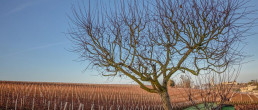
Long Harvest Window
According to all the Bordelais vintners, this was one of the most spread out, relaxed harvests in living memory, with the red grapes coming in from early September right through to late October – and Sauternes going later still.
For the reds, if there’s one vintage this century that growers could, hand-on-heart, say that they could pick and choose their harvest dates ‘à la carte’, it was 2018.
At Château Troplong Mondot in St-Émilion they harvested their Merlot on 10 September. Four miles down the road at Ch Fleur Cardinale, they completed their red harvest on 24 October. There are exceptions, naturally, but the busiest time for harvesting the Merlots and the Cabernets was during the second half of September and the start of October. The bunches were, unsurprisingly, as clean as a whistle, and no rot whatsoever.
That was good news for quality potential, as most grapes had the time to get fully mature before picking. But it also meant that you may see stylistic choices coming in to play, particularly as the last few years have seen a few serious changes in style. Troplong Mondot, for example, began picking extremely early – 7 September – on certain selected plots, leading many critics to assume that the rewriting of its stylistic signature will continue. Beauséjour-Bécot had similarly brought its harvest date forward from where it was traditionally (and started using amphoras for some fermentations, to focus on the pure fruit flavours of the vintage). Ten years ago, people were signalling how late they were picking, whereas today it’s the opposite.
“The 2018s have good acidity and structure, fine textures and an approach that is easy to capture and to understand. It is very complete”
Olivier Berrouet, Chateau Petrus
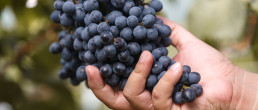
The Hand of Man
Whilst the French are particularly fond of exalting the importance of their legendary “terroir” the 2018 vintage seems to be one in which, the “hand of man” was actually critical in decisions made after a trying start to the growing season. The 2018 Bordeaux vintage probably embodies the special relationship between man and nature better than most in the last decade.
Bold, astute decisions at the right time have resulted in estates making some of their greatest wines in recent years. Missed opportunities, often a failure to act at the crucial moment, however, had far-reaching effects and in those cases the end result does not reflect this very fine year. Vintage comparisons are not always helpful, but there is reason to take note when one distinguished producer, Olivier Bernard of Domaine de Chevalier, says that, while until now 2005 and 2010 were his greatest achievements, for him his 2018 surpasses both!
Thus, with the weather forecast in September and early October throwing up no harvesting deadlines, it was really a question of terroir, varieties, decision-making, resources, and preferences over style. Alcohol levels – especially with Merlot – were always going to be on the high side unless the grapes were picked before reaching maturity.
What will matter is balance and ensuring that the wine has freshness. Today, thankfully, there are far fewer producers trying to extract the living daylights out of the wine for extra body and structure; the mood in Bordeaux these days is certainly not to over-extract.
Stylistically, it seems – again, for those estates for which everything went well – that they’ve got something close to 2015 and 2016 on the right bank, and a blend of 2016 and 2010, plus a dash of 2009, on the left bank.
“Overall, [2018] is a bit like ‘2016 plus plus’ – 2016 with knobs on – not that everyone will want the ‘plus plus’ part.”
Jancis Robinson MW
Baptiste Guinaudeau of Chateau LaFleur made a fascinating analysis of the growing seasons that Bordeaux now experiences. “We now have three different types of vintages,” he explained. “Classical such as 2012 or 2014. The big ones like 1989, 2005 and 2010 that are solar ones associated with grape tannins. And a new type, such as 2016 and 2018, that combines punch and freshness with density from tiny berries, and the mouthfeel. In the 2016 and 2018 you can find a sense of brightness.”
“These [2018 Bordeaux] wines have an impressive underlying freshness despite one of the warmest and driest late summers and harvests on record.”
James Suckling, Wine Critic
2018 really is a high-class vintage. Notably less homogenous than some years as many vineyards faced difficulties at some stages during the growing season, it is a year where the human element was so very important.
“The top wine directors and vineyard managers certainly earnt their crust in 2018 with some sensational results. The best wines will stand the test of time with an amazing life ahead of them and have excited us at all levels.”
David Roberts, Master of Wine
Finally, it must also be said that, despite many 2018s speak more of the year than of the soil – where the climate’s voice is louder than that of the vineyard, and the proportions are more “New World” – it is a testimony to vintners’ sensitivity that most wines also retain a profoundly Bordeaux imprint, and a naturally fresh acidity alongside those underlying gravely mineral elements.
Or, as Léoville- Las-Case’s Bruno Rolland put so succinctly: “Ils sont des vins puissant, mais toujours de chez nous” – yes indeed, “They are powerful wines, but they still taste of home.”
Luckily for us, there are compelling, classy wines on both the Left and Right Banks in the 2018 vintage. Also, and unusually for top Bordeaux vintages, there is a readiness to drink. Of course, some 2018s will need at least 10 years to start their drinking peak. But some of the “Super-Seconds”, the Cru Bourgeois and the humbler Bordeaux Superieur are approachable and ready to drink right now.
Of course, you’ll have your invaluable CORAVIN Wine Preservation System to help gauge the right drinking windows for your collectible 2018 Bordeaux Beauties!
Don’t be a slow poke – NOW is the time to top up your cellar with some vinous gems from the superb Dhall & Nash 2018 Bordeaux offering. These wines manage to combine a hedonistic powerful appeal whilst being calmingly and deservedly thought-provoking! Salut!
Browse our full range of 2016 Bordeaux beauties below and get in touch if you’d like to place an order: orders@dnfinewine.com.
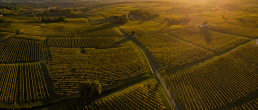
The 2018 Bordeaux Beauties
They’re Here & They’re Spectacular!
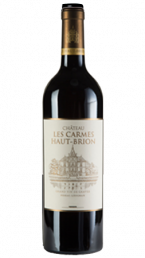
Château Les Carmes Haut Brion 2018
Pessac-Léognan, Bordeaux
“The 2018 Château Les Carmes Haut-Brion is a rock star of a wine and is based on a unique blend of 37% Cabernet Franc, 34% Cabernet Sauvignon, and 29% Merlot that was brought up in 80% new French oak. Offering a deep ruby/purple color as well as a thrilling bouquet of blackcurrants, smoked tobacco, chocolate, violets, damp earth, and truffle, it hits the palate with a full-bodied yet almost understated, building style that carries ripe, supple tannins, gorgeous amounts of smoky black fruits, and an endearing, layered, multi-dimensional texture that keeps you coming back to the glass. A dead ringer for a great vintage of Haut-Brion, it is far from unapproachable today yet needs 7-8 years of bottle age for the fireworks to develop and will have 50-years or more of longevity! Hats off to Guillaume Pouthier for a magical, seamless, singular beauty!”
100 points – Jeb Dunnuck
Esteemed wine critic Antonio Galloni from Vinous – describes the 100 pointer Les Carmes Haut Brion: “Guillaume Pouthier crafted one of the most riveting, unforgettable wines of the year!”
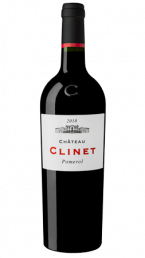
Château Clinet 2018
Pomérol, Bordeaux
“Closed and coiled right now, with ripped layers of fruit. A ton of graphite, bitter dark chocolate, and finessed berry fruits. Definitely need to give this time and respect its muscular from. A seriously impressive Clinet that has held its form over ageing.”
97 points – Decanter
“The 2018 Clinet is a blend of 85% Merlot and 15% Cabernet Sauvignon, aged for approximately 16 months in French oak barriques, 75% new. Deep garnet-purple colored, profound notions of stewed black plums, mulberries and black cherry compote, plus hints of black truffles, damp soil, tobacco leaf and chargrill with an emerging waft of cedar. The full-bodied palate is a full-on volcano of black fruit and molten rock waiting to erupt, with a solid frame of firm, grainy tannins, and bold freshness, finishing with amazing length.”
97+ points – Robert Parker.com
99 points – Jeb Dunnuck
96 points – James Suckling
95 points – Vinous
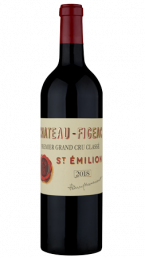
Château Figeac 2018
St. Émilion, Bordeaux
“This shows wonderful precision and focus with dark-berry, tobacco, and blueberry character. Full-bodied, tight, and vivid. Solid and structured. Really powerful for Figeac. The real new style here of Figeac that harkens back to the great wines of the 1950s and 1940s. This year, equal parts of merlot, cabernet sauvignon and cabernet franc.”
98 points – James Suckling
“My wine of the vintage, if I must have just one is Figeac: captivating, ravishingly beautiful, unmistakeably great wine,”
Michael Schuster, from World of Wine
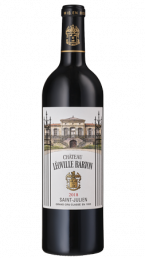
Château Léoville-Barton 2018
St-Julien, Bordeaux
“This estate has been on fire in recent vintages, and the 2018 Château Léoville Barton is up there with the best of them. Based on 82% Cabernet Sauvignon and 18% Merlot that was brought up in 60% new French oak, this classic, flawlessly balanced, straight-up awesome Saint-Julien has loads of cassis and mulberry fruits as well as notes of freshly sharpened pencils, leafy tobacco, chocolate, and earth. Rich, medium to full-bodied, and concentrated on the palate, it has building tannins and healthy acidity, yet the fruit is pure, perfectly ripe, and wonderfully integrated with all the wine’s components. As is normal with this cuvée, it closes down with extended air and is going to take a solid 8-10 years of bottle age to reach the early stages of maturity. It’s going to evolve for 30-40 years in cold cellars.”
97 points – Jeb Dunnuck
“Dark and brooding on the nose, with savoury spices and earthy blackcurrant fruit. Superb depth of dark cassis fruit and brilliant retained freshness of acidity. For now, the oak is a little obvious but that is no worry, there is such intensity and such a bold tannic structure that this is best left in the cellar longer than most. Robust, grippy tannins amply frame the fruit and add to the sense of gravitas here. This is a wine that takes the ripe concentration of the vintage and wraps it in house style – freshness and structure. Excellent.“
18/20 – Jancis Robinson
“Cassis, crushed plum and steeped blackberry fruit is all packed into this wine, along with tar, violet and roasted apple wood notes, plus a terrific tug of warm earth. Shows lots of energy in reserve, with a tightly knit finish pulling everything together. Cellaring required. *Highly Recommended*”
97 points – Wine Spectator
97 points – Wine Enthusiast
97 points – James Suckling
96 points – Decanter
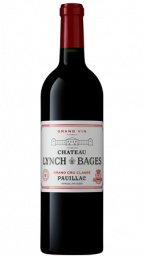
Château Lynch-Bages 2018
Pauillac, Bordeaux
“One of the finest vintages I’ve ever tasted from this address, the 2018 Château Lynch-Bages has everything you look for in a great wine: incredible aromatics, richness without weight, perfect balance, and a purity of fruit that’s just about off the charts. Dense purple, it reveals a glorious perfume of blackcurrants and blackberry fruits, a deep, unctuous mouthfeel, building tannins, and a complex array of cedar pencil, tobacco, wood smoke, and chocolate. A true blockbuster in every sense, with masses of fruit and tannins as well as moderate acidity, it will probably merit a triple-digit score in a decade and is a 50+-year wine from this team.”
98 points – Jeb Dunnuck
97 points – Wine Spectator
97 points – James Suckling
96 points – Robert Parker’s Wine Advocate
The Super Seconds
Bordeaux produces a number of exceptional, age-worthy wines that deliver both superb quality and value. This mid-tier is one of Bordeaux’s real sweet spots for us the consumer. Most of these wines taste like they should cost twice as much as their bottle price. Don’t hold back!!!
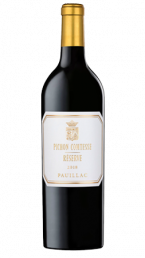
Château Pichon-Longueville Réserve de la Comtesse de Lalande 2018
Pauillac, Bordeaux (375mls also available)
“The second wine of the Château, the 2018 Reserve De Comtesse De Lalande checks in as 53% Cabernet Sauvignon and 42% Merlot, with the balance Petit Verdot and Cabernet Franc. Terrific classic Pauillac notes of blackcurrants, lead pencil shavings, leafy tobacco, and chocolate define this beauty, and it’s medium to full-bodied, with a layered, balanced, pure character, present yet ripe tannins, and a great finish. As I wrote last year, it tastes more like a Grand Vin than a second wine. The larger Merlot component shows here compared to its more Cabernet Sauvignon-dominated big brother, and it’s a much more plush, silky, sexy wine that already offers loads of pleasure. It’s going to evolve for two decades and is well worth seeking out.”
94 points – Jeb Dunnuck
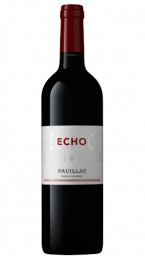
Echo De Lynch-Bages 2018
Pauillac, Bordeaux
“…the second wine of Lynch Bages and is 62% Cabernet Sauvignon, 36% Merlot, and the rest Cabernet Franc brought up all in once-used barrels. Cassis, graphite, lead pencil, and graphite notes all emerge from this deep, shockingly concentrated wine that has full-bodied richness, ripe, present tannins, and a great finish. The stats on this second wine are telling, and it’s 13.9% alcohol, 3.57 pH, and an IPT of 87. It’s one serious, blockbuster-styled second wine that shows how successful some of the second wines in the vintage are.”
93-94 points – Jeb Dunnuck
93-94 points – James Suckling
92 points – Decanter
90-92 points – Robert Parker’s Wine Advocate
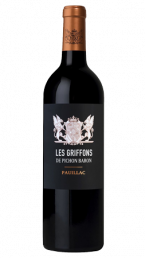
Château Pichon-Longueville Les Griffons de Pichon Baron 2018
Pauillac, Bordeaux
“The 2018 Les Griffons de Pichon Baron is a heady, wild Pauillac. An exotic mélange of inky black fruit, chocolate, spice, grilled herbs, espresso, and new oak gives the Griffons its extroverted personality. The tannins need a bit of time to soften, but there is plenty to look forward to. This is an especially dense, rich Pauillac.”
93 points – Vinous
94 points – Vert de Vin
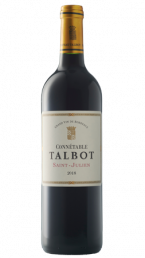
Château Talbot Connétable Talbot
St. Julien, Bordeaux
“Lots of blue fruit in this second wine with a medium to full body, polished and racy tannins, and a fresh and vivid finish.”
92 points – James Suckling
57% Merlot, 43% Cabernet Sauvignon. “Round and already aromatically expressive with dark-fruit and liquorice notes. All the signs of a solar vintage, the fruit generous and mouth-coating, an inherent sweetness and slight glow of alcohol on the finish. Fine, light tannins with a little graininess on the end.”
16/20 – Jancis Robinson
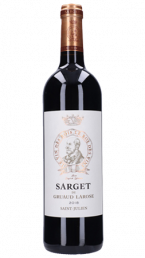
Château Gruard-Larose Sargent de Gruard-Larose 2018
St. Julien, Bordeaux
“A juicy and fresh red with dark berries and hints of chocolate. Medium to full body, firm and juicy tannins and a flavorful finish. Delicious already.”
92 points – James Suckling
The Ever-Classy Classic – Château d’Yquem
“2018 is one of the latest-ripening vintages ever produced at Yquem,” says Pierre Lurton, president of Château d’Yquem in Sauternes and Château Cheval Blanc in St Émilion.
Château d’Yquem was mainly harvested from the 22 to the 27 October. The 2018 falls into line with the style of the vintage for sweet wines: a bold, forward expression of great purity. To its credit, it has just a little more poise, freshness, and mineral nuances than many of the other wines from this difficult Sauternes vintage.
The warm, very dry spell toward the end of the 2018 growing season meant that Sauternes producers had to play the waiting game for botrytis. Subsequently, the best wines of Sauternes and Barsac in 2018 came in as late as possible—in late October and even into early November. These wines have notably more botrytis character than the earlier harvested wines and therefore also livelier acid profiles.
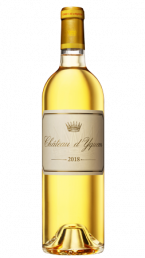
Château d’Yquem 2018
(also available in 375ml & 1.5L bottles)
“The 2018 d’Yquem is all lime cordial, grapefruit oil and mandarin peel to begin. With a little coaxing, the fireworks really begin, letting off a whole array of honeysuckle, candied ginger, dried pineapple, lemon pastilles, chalk dust and sea spray scents, followed by a savory undercurrent of shaved almonds, allspice, and baking bread. The palate is an exercise in polish and poise, featuring the most gorgeously creamy texture and bright, sparkling freshness, framing all the densely laden tropical and citrus fruit layers, finishing with a powerful BANG of profound floral and spice perfume. It is wonderfully sweet, yes, but that—paradoxically for a “sweet wine”—is almost beside the point.”
98 points – Robert Parker’s Wine Advocate
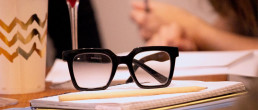
Understanding Bordeaux Better - Here's Some Geek Talk
What’s the Bordeaux ‘advantage’?
It’s location. The ice age certainly did Bordeaux some favours, leaving behind an environment that can only be described as a wine-growing paradise. In fact, the success of Bordeaux can largely be linked to the incredible soil structure it sits on and its geographical location on the western seaboard of France.
It has a variety of clay, limestone, gravel, and siliceous soil which makes up this diverse yet geologically perfect landscape. And with a significant mineral content to nourish the vines. With two major rivers (Garonne and Dordogne) running through the centre of Bordeaux and an array of tributaries from the Gironde Estuary, Bordeaux is home to an incredible watershed with ample groundwater, perfect for winemaking. This system of rivers feeding into the Gironde estuary also helped put Bordeaux wines on the map historically, by providing a bustling port with easy access to the ocean and, thus, important foreign markets. The moderating effect of the coastal gulf stream creates a near-perfect maritime climate. Thus, Bordeaux is blessed with temperate winters and long, warm summers that are ideal for growing grapes.
The Garonne and Dordogne Rivers divide the Bordeaux region into its sub-regions, each of which is home to several appellations. Altogether, there are 60 appellations in Bordeaux, which is also the greatest producer of appellation wines in France.
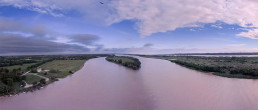
The High Rent Districts
In any discussion on Bordeaux, you may have heard the terms ‘Left bank’ and ‘Right Bank’ bandied about. They are unofficial terms that are used widely to describe the rather different bits of Bordeaux either side of the Gironde estuary/river that slices through the region, splitting by the time it reaches the city of Bordeaux to form the Dordogne and Garonne rivers (like an inverted ‘Y’).
The Left Bank can be broken down into three main regions: Médoc, Haut-Médoc and Graves. The most famous ones have their own unique and distinct style. Cabernet Sauvignon is the star grape variety, flourishing in the Left Bank’s gravel soils, which capture the warmth of the sunshine during the day and transmit it to the vines during the night.
The wines of the Left Bank are known for their magnificent personality. The red blend tends to be comprised, in order of importance, by Cabernet Sauvignon, Merlot, Cabernet Franc, Malbec and Petit Verdot. These wines tend to be bold and tannic, with remarkable ageing potential, although styles vary from one appellation to another. Signature aromas include dark fruit, cigar box, cedar, truffles, leather, and spices with age. These legendary wines are designed for cellaring.
“The top wine directors and vineyard managers certainly earnt their crust in 2018 with some sensational results. The best wines will stand the test of time with an amazing life ahead of them and have excited us at all levels.”
David Roberts, Master of Wine
Margaux (Haut-Médoc): described as charming when well made, the style is perfumed, floral, with a silky texture. This is considered the feminine version of Left Bank Bordeaux.
Pauillac (Haut-Médoc): concentrated, with distinct aromas of cassis, cedar, and tobacco. This is the masculine version of Bordeaux in the Left Bank.
St-Estèphe (Haut-Médoc): deeply coloured, tannic, austere when young, but with a great ageing potential.
St-Julien (Haut-Médoc): perceived as the commune for wine connoisseurs who seek subtlety, it is somewhere in between all the three wines above.
Pessac-Léognan (Graves): this commune can produce both red and white wines, compared with the others in this list, which are red wine only. The reds of Pessac-Léognan have a distinct mineral, earthy aroma, topped with smokiness.
Bruno Borie, owner of Saint-Julien second growth Château Ducru-Beaucaillou, called 2018 “a revolutionary vintage that sets new standards.” He compares the 2018 to the legendary years of 1945, 1961 and 1982!
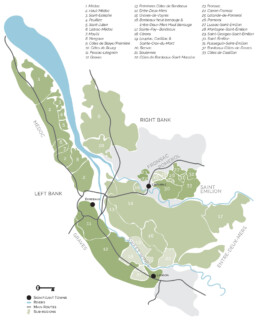
On the Right Bank, things are a bit simpler here with just two main notable communes: the appellations of Saint-Émilion and Pomérol. These were not included in the 1855 classification.
Here, because of the rather different soils, the Merlot grape variety is king. It’s frequently blended with Cabernet Franc, but the majority of wines are Merlot-dominant. The top right bank properties used to be in the shadow of the classed growths, but this has changed, and now the most sought-after wines cost as much as the First Growths do. (Angelus, Petrus, LaFleur, Cheval Blanc)
But wait, there’s more Geek Talk:
Pomérol: a small commune, but distinctive, which produces glamorous and opulent wines dominated by top quality Merlot.
Saint-Émilion: wines have moderate to high tannins, but a soft and rich mouthfeel, and complex red berry fruit and plum aromas. These are blends mix Cabernet Franc and Merlot in various proportions.
The wines of the Right Bank come from soils predominantly composed of red clay, gravel, and limestone, with the exception of Pomérol, whose vines are planted in soils of gravel, clay, and sandy soil.
Ronan Laborde, whose family own Château Clinet in Pomérol, said that 2018 “is a vintage that does not show off but has a lot of class.”
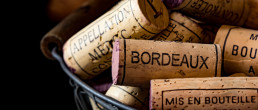
Highly Classified!
Trying to Understand the Bordeaux Classifications Without Falling Asleep
Wine laws in Europe have a reputation for being incredibly complicated. Bordeaux holds its fair share of the blame for this, with three different systems used to identify the quality of the region’s appellations. But in hindsight, the classification of the wines of Bordeaux proved to be an international marketing success. It was the first of its kind and quickly increased demand and prices for the best classified Bordeaux wines.
The Bordeaux appellations were famously classified in 1855, on the basis of the properties which consistently fetched the highest prices at the time. This classification had five tiers of ‘Growths’, with the celebrated ‘First Growth’ Châteaux (Latour, Margaux, Lafite, Haut Brion) at the top, and then Second, Third, Fourth and Fifth growth properties following.
The classification has proved remarkably resilient: while Bordeaux has changed quite a bit as a region in the intervening 160-odd years, the classed growths, which represent the elite of Bordeaux properties, remain at the fore. Of course, there are some Fifth Growths which now outperform third growths, and several properties could be marked as over- or under-achievers in their class, but the classification still matters in the marketplace. Only one significant change has occurred: in 1973, Château Mouton Rothschild was promoted from Second to First Growth status.
A favourite discussion point among wine geeks is which of the leading Left Bank estates could also be promoted to First-Growth status: Château Palmer in Margaux, Cos d’Estournel in Saint-Estèphe and Léoville Las Cases in St Julien could be contenders, as could the ever-reliable Léoville Barton.
Further south, Sauternes producers also got a classification system in 1855, devised alongside the one in Médoc as part of celebrations around the Exposition Universelle de Paris that year. Producers were split into First and Second growths – or Premiers and Deuxièmes crus classés – but Château d’Yquem was given special dispensation as a ‘Premier Cru Supérieur’.
The Left Bank is also home to the Cru Bourgeois classification, which was also relaunched as a three-tier system. A classification for dry red and white Graves wines was devised in 1953 and finalised in 1959. It includes 16 cru classé estates, all of which sit inside the Pessac-Léognan appellation today.
On the Right Bank, Pomérol has no classification system but is home to several small yet mighty estates including the legendary Château Petrus. While Saint-Émilion is split up into top-level Premier Grand Cru Classé wines, which are further split into an A category (the best) and a B category. Below that come Grand Cru Classé wines and finally Grand Cru. The St-Émilion Classification was first introduced in 1955. Unlike the 1855 Classifications, this ranking is frequently reviewed, currently every 10 years. The next one is due in 2022.
In the 2012 list, 82 estates were divided into 64 Grand Cru Classé estates and 18 Premier Grand Cru Classé properties – themselves separated into ‘A’ and ‘B’ rankings. Château Angélus and Château Pavie joined Ausone and Cheval Blanc as Premier Grand Cru Classé A estates in 2012. Beyond this, you will also see bottle labels stating ‘St-Émilion Grand Cru’, which is just an appellation.
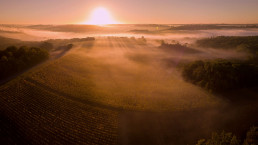
When discussing this extraordinary 2018 vintage, wine buffs and critics will focus most of their attention on Bordeaux’s big guns. But for our savvy D&N devotees, you will find much to like among the more modestly priced wines and “Super-Seconds” of 2018. When it comes to quality, value and availability, no region in the world can match Bordeaux.
“The styles of a lot of the 2018s are pretty extreme. BIG tannins, alcohols on the high side … a lot of fruit, a lot of power, a lot of density. In the best cases, these are real WOW wines. And I tasted some incredible examples of this WOW style.”
Lisa-Perotti-Brown MW, for Robert Parker’s Wine Advocate
